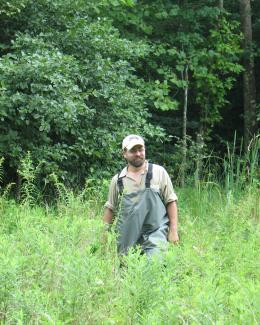Abstract
Methane is a potent greenhouse gas which accounts for 20% of radiative forcing. Several reports from diverse forest types demonstrate that the direct emission of methane from living tree trunks may be a significant terrestrial methane emission source; ongoing debate in recent literature contests whether tree emissions are from due to methane transport from soils or from the wood environment itself. Contrastingly, reports of methanogens from wood of Populus tree species were prominent in the literature 40 years ago, but have not been revisited with modern molecular microbial ecology approaches. We examined the microbial communities associated with the heartwood and sapwood of Eastern Cottonwood (Populus deltoides) trees using Illumina rRNA gene amplicon sequencing. At sampling, trees often emitted fetid fluid or flammable gasses, and our data indicate both environments were primarily composed of microbial taxa associated with anaerobic environments. Methanogens were prominent in heartwood environments (mean 34% relative abundance) compared to sapwood environments (13%). Dominant OTUs were primarily classified as the acetoclastic Methanobacterium spp. Members of the Firmicutes phylum overall were 39% of sequences and in 42% greater abundance in sapwood over heartwood environments. Tree diameter at breast height was the strongest predictor of Methanogen abundance, but wood moisture content and pH were also significant predictors of taxon abundance and overall community composition patterns. Our results show that unlike more well studied plant associated communities in the soil, roots, rhizosphere and phylosphere; wood associated communities are shaped by the unique environmental conditions of the habitat and may be prominent and overlooked sources of methane emissions in temperate forest systems.



